Here are some beautiful space photos and videos that have been posted on the Internet recently. Enjoy!
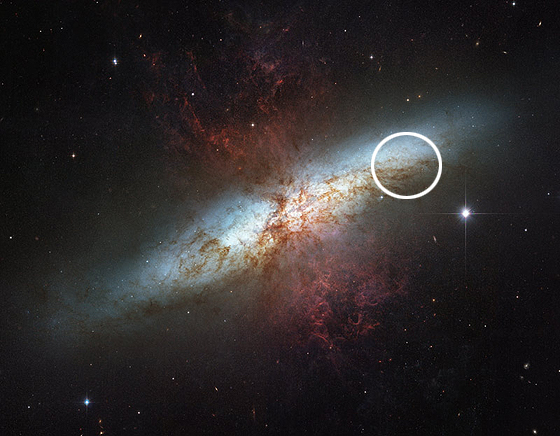
Here are some beautiful space photos and videos that have been posted on the Internet recently. Enjoy!

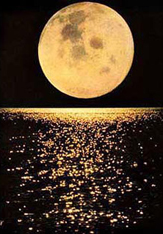 There will be a beautiful Full Moon out the night of Valentine’s Day this year. So take your Valentine outside that moonlit night and wish upon your star!
There will be a beautiful Full Moon out the night of Valentine’s Day this year. So take your Valentine outside that moonlit night and wish upon your star!
The stars are bright, and the night is still, and the river is singing by,
And many a face is upward turned to gaze at the moon’s bright eye.
North and south, from the forest deeps to the heart of the silver plain,
There’s many an eye will see no sleep till the east grows bright again;
There’s many a hand will toil to-night by shining land and sea.
O moonlight, bear my message of love to the heart that beats for me.
From “In the Moonlight” by David McKee Wright
While you’re looking at the Moon, look for the brightest ‘star’ you’ll see in the eastern sky after sunset. That’s the planet Jupiter, which is in the Name A Star Live constellation Gemini this month. Continue reading “February’s Stars and Planets”
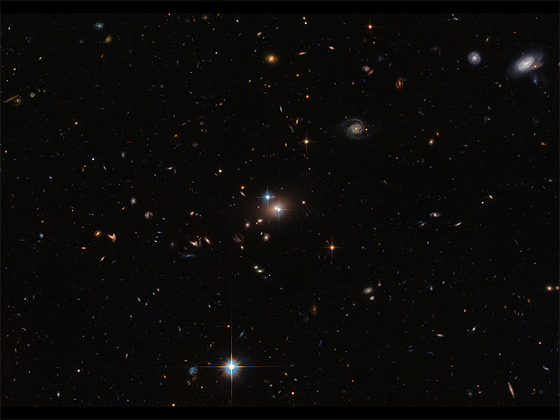
In this new Hubble Space Telescope image two objects are clearly visible, shining brightly. When they were first discovered in 1979, they were thought to be separate objects — however, astronomers soon realized that these twins are a little too identical! They are close together, lie at the same distance from us, and have surprisingly similar properties. The reason they are so similar is not some bizarre coincidence; they are in fact the same object.
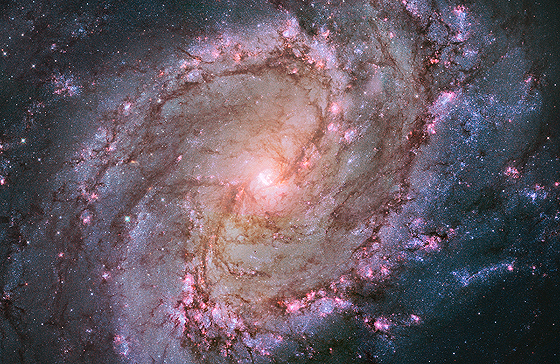
The vibrant magentas and blues in this Hubble Space Telescope image of the barred spiral galaxy M83 reveal that the galaxy is ablaze with star formation. The galactic panorama unveils a tapestry of the drama of stellar birth and death. The galaxy, also known as the Southern Pinwheel, lies 15 million light-years away in the constellation Hydra.
Continue reading “New Hubble Photo of the Southern Pinwheel Galaxy!”
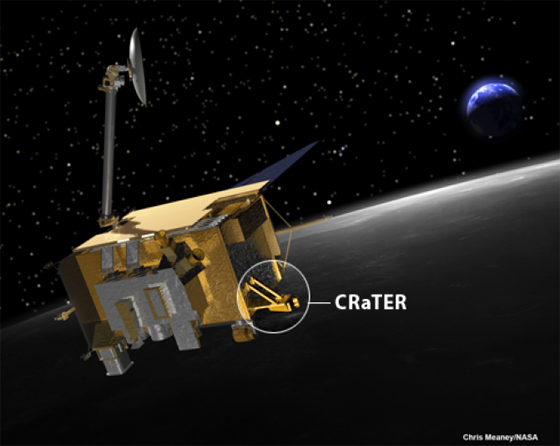
Your star name will fly on board the Sunjammer solar sail, which will monitor the Sun for dangerous space weather events that can impact us here on Earth. Meanwhile, NASA’s Lunar Reconnaissance Orbiter, or LRO is checking space weather from its orbit around the Moon, and feeding its results to an Internet radio station.
Continue reading “Musical Space Weather Reports from NASA Moon Mission”
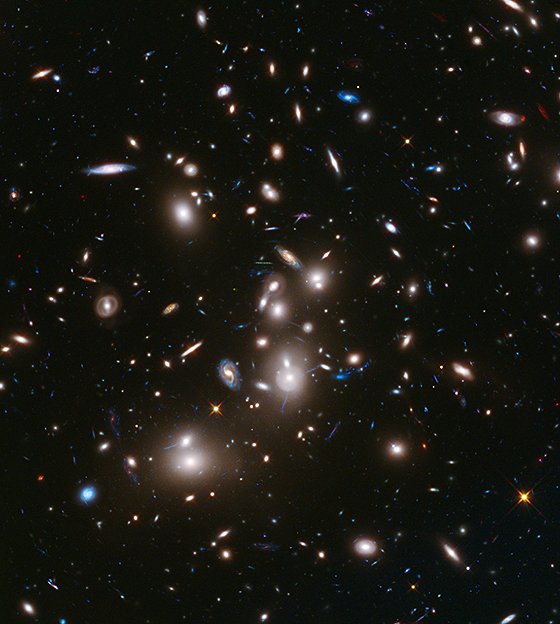
This long-exposure Hubble Space Telescope image of massive galaxy cluster Abell 2744 (foreground) is the deepest ever made of any cluster of galaxies. It shows some of the faintest and youngest galaxies ever detected in space.
Continue reading “Hubble Eyes a Beautiful Cluster of Galaxies!”
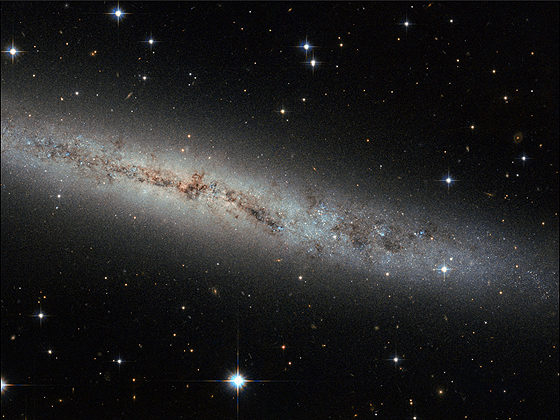
This new Hubble Space Telescope image shows spiral galaxy ESO 373-8, which is located some 25 million light-years away. Together with at least seven of its galactic neighbors, this galaxy is a member of the NGC 2997 group. We see it side-on as a thin, glittering streak across the sky, with all its contents neatly aligned in the same plane. Continue reading “Hubble Eyes Galaxy as Flat as a Pancake”
Here are some beautiful space photos and videos that have been posted on the Internet recently. Enjoy!
Here’s a beautiful, new video from NASA: “The World Outside My Window – Time Lapse of Earth from the International Space Station”
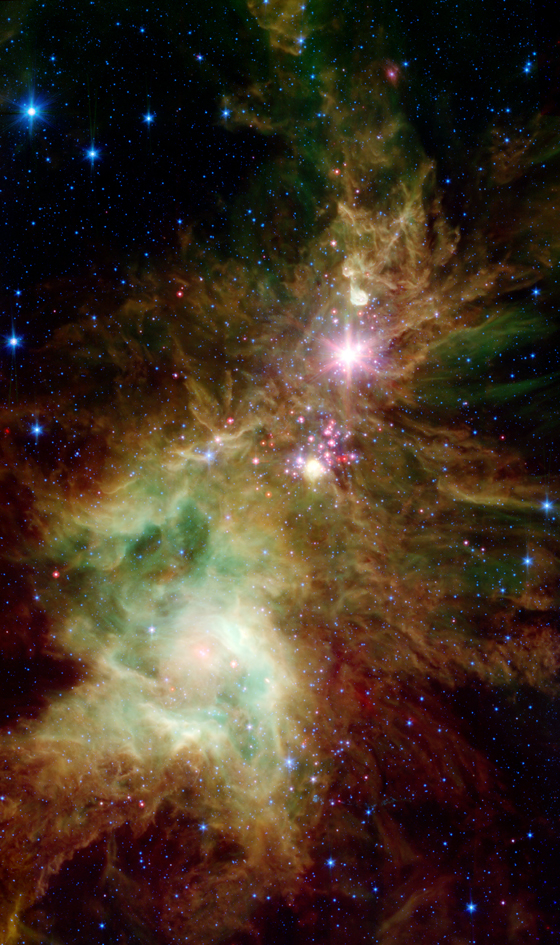
Newborn stars, hidden behind thick dust, are revealed in this image of a section of the Christmas Tree Cluster from NASA’s Spitzer Space Telescope. The newly revealed infant stars appear as pink and red specks toward the center and appear to have formed in regularly spaced intervals along linear structures in a configuration that resembles the spokes of a wheel or the pattern of a snowflake. Hence, astronomers have nicknamed this the “Snowflake Cluster.”
Star-forming clouds like this one are dynamic and evolving structures. Since the stars trace the straight line pattern of spokes of a wheel, scientists believe that these are newborn stars, or “protostars.” At a mere 100,000 years old, these infant structures have yet to “crawl” away from their location of birth. Over time, the natural drifting motions of each star will break this order, and the snowflake design will be no more.
While most of the visible-light stars that give the Christmas Tree Cluster its name and triangular shape do not shine brightly in Spitzer’s infrared eyes, all of the stars forming from this dusty cloud are considered part of the cluster.
Like a dusty cosmic finger pointing up to the newborn clusters, Spitzer also illuminates the optically dark and dense Cone Nebula, the tip of which can be seen towards the bottom left corner of the image.
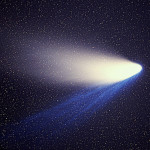
Comet ISON Update
As we wrote last month, Comet ISON was to make its closest approach to the Sun on November 28, 2013, which was Thanksgiving Day in the United States. The comet flew very close to the Sun and thus faced the Sun’s tremendous gravitational and radiation forces. As we stated, it was impossible to predict what would happen to the comet upon its encounter with our nearest star. Unfortunately, the latest reports are that the Sun has pretty much destroyed this comet, which many astronomers had dubbed the “comet of the century.”
But do not fret: There’s still plenty to see in the night sky this December!
The planet Venus is particularly bright this month. In fact, if you observe Venus on a clear, dark night (without moonlight and far from city lights) while snow remains on the ground, hold your hand about a foot off the ground: You might just see Venus casting a shadow on the ground! Venus is the really bright ‘star’ you will see above the west-southwestern horizon after sunset.
Meteor Shower
One of the best meteor showers of the year occurs this month: The “Geminid Meteor Shower,” s0-called because the shooting stars all appear to fly out of the constellation Gemini.
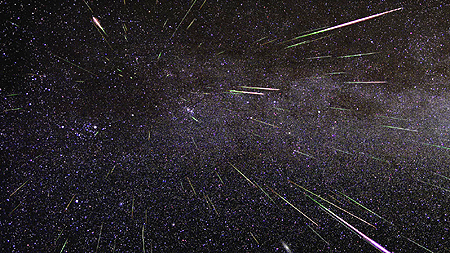
The Geminids are active between Dec. 4 and 17, and peak on Dec. 14. But, because the Moon will be fairly bright the night of Dec. 13/14, the best time to see the Geminids that night will be during the hour, or so, before sunrise. However, you should still see shooting stars no matter what time of the night you look for them in the Dec. 4-17 time period.
No telescopes or binoculars required! To observe shooting stars, the best thing to do is lie down on a lawn chair or blanket and look up! Depending on where you live in the world, be sure to bring along plenty of winter clothing or mosquito repellant!
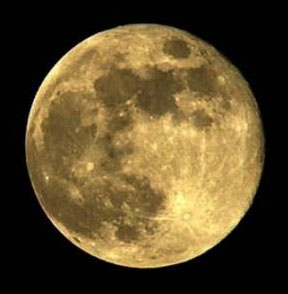
Follow the Moon through the Constellations
Did you know you can use the Moon to help identify constellations (areas of the night sky) like Aries, Taurus and Sagittarius? Follow us on Twitter where we Tweet what constellation the Moon is in each night. (Note that during certain times of the month, the Moon will not appear during the night hours, and so we do not Tweet info about the Moon at those times of the month.)
Finding your star in the night sky
Stars are located within constellations, which are just areas of the night sky. Scorpius, Aries and Taurus are examples of constellations. Your Name A Star Live Star Certificate displays the name of your constellation. You can use our online World Constellation Guide to determine if you can see your constellation during the evening hours (between sunset and midnight). Of course, you’ll need a telescope to see your star. But you can see your constellation without the use of a telescope. You can also find your constellation by using our Virtual Planetarium™ astronomy software. A planisphere is another useful device.
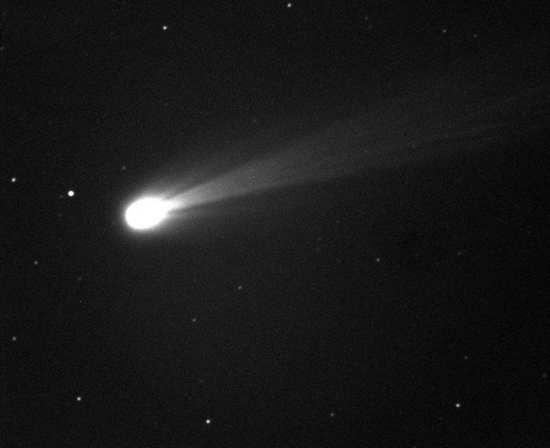
Comet ISON shines brightly in this image taken on the morning of Nov. 19, 2013. This is a 10-second exposure taken with the Marshall Space Flight Center 20″ telescope in New Mexico. The camera there is black and white, but the smaller field of view allows for a better “zoom in” on the comet’s coma, which is essentially the head of the comet.
The comet makes its closest approach to the Sun on Nov. 28, 2013 — Thanksgiving Day in the U.S. Should the comet survive its close encounter with our star, the comet could put on quite a show in December. Its tail would demonstrate the effect of the physical pressure of sunlight — the force the Sunjammer solar sail will use to fly into deep space. Sunjammer will carry our customers’ star names into the final frontier. Read more about the comet and Sunjammer in our blog post from early November entitled, “The Comet & the Sunjammer Solar Sail.”
And check out this neat video (below) of Comet ISON rising over the Canary Islands just a few days ago!